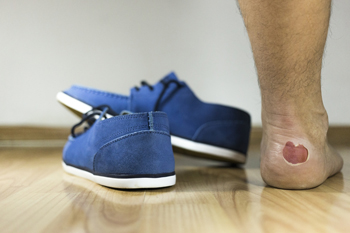
Foot blisters are small fluid-filled sacs that develop on the skin, often due to friction from shoes, excessive moisture, or heat. Common causes include wearing new or ill-fitting footwear, prolonged walking or running, and burns. Athletes often get blisters from repetitive friction on their skin from shoes rubbing against the feet. Blisters can feel painful, tender, or irritated, especially when pressure is applied. Blisters may appear as clear, raised bumps, but if they become red, cloudy, or filled with pus, infection may be present. Symptoms like multiple blisters, spreading redness, warmth, or fever can signal a more serious condition that needs professional care. A podiatrist can safely drain large or painful blisters, treat any infection with antibiotics, and provide advice on blister prevention. They may also recommend protective padding or custom orthotics to reduce pressure and friction. If you have a bothersome foot blister, it is suggested that you schedule an appointment with a podiatrist.
Blisters are prone to making everyday activities extremely uncomfortable. If your feet are hurting, contact one of our podiatrists of Highpoint Foot & Ankle Center. Our practitioners can provide the care you need to keep you pain-free and on your feet.
Foot Blisters
Foot blisters develop as a result of constantly wearing tight or ill-fitting footwear. This happens due to the constant rubbing from the shoe, which can often lead to pain.
What Are Foot Blisters?
A foot blister is a small fluid-filled pocket that forms on the upper-most layer of the skin. Blisters are filled with clear fluid and can lead to blood drainage or pus if the area becomes infected.
How Do Blisters Form?
Blisters on the feet are often the result of constant friction of skin and material, usually by shoe rubbing. Walking in sandals, boots, or shoes that don’t fit properly for long periods of time can result in a blister. Having consistent foot moisture and humidity can easily lead to blister formation.
Prevention & Treatment
It is important to properly care for the affected area in order to prevent infection and ease the pain. Do not lance the blister and use a Band-Aid to provide pain relief. Also, be sure to keep your feet dry and wear proper fitting shoes. If you see blood or pus in a blister, seek assistance from a podiatrist.
If you have any questions, please feel free to contact our offices located in Chalfont, Doylestown, and Hatboro, PA . We offer the newest diagnostic and treatment technologies for all your foot care needs.
